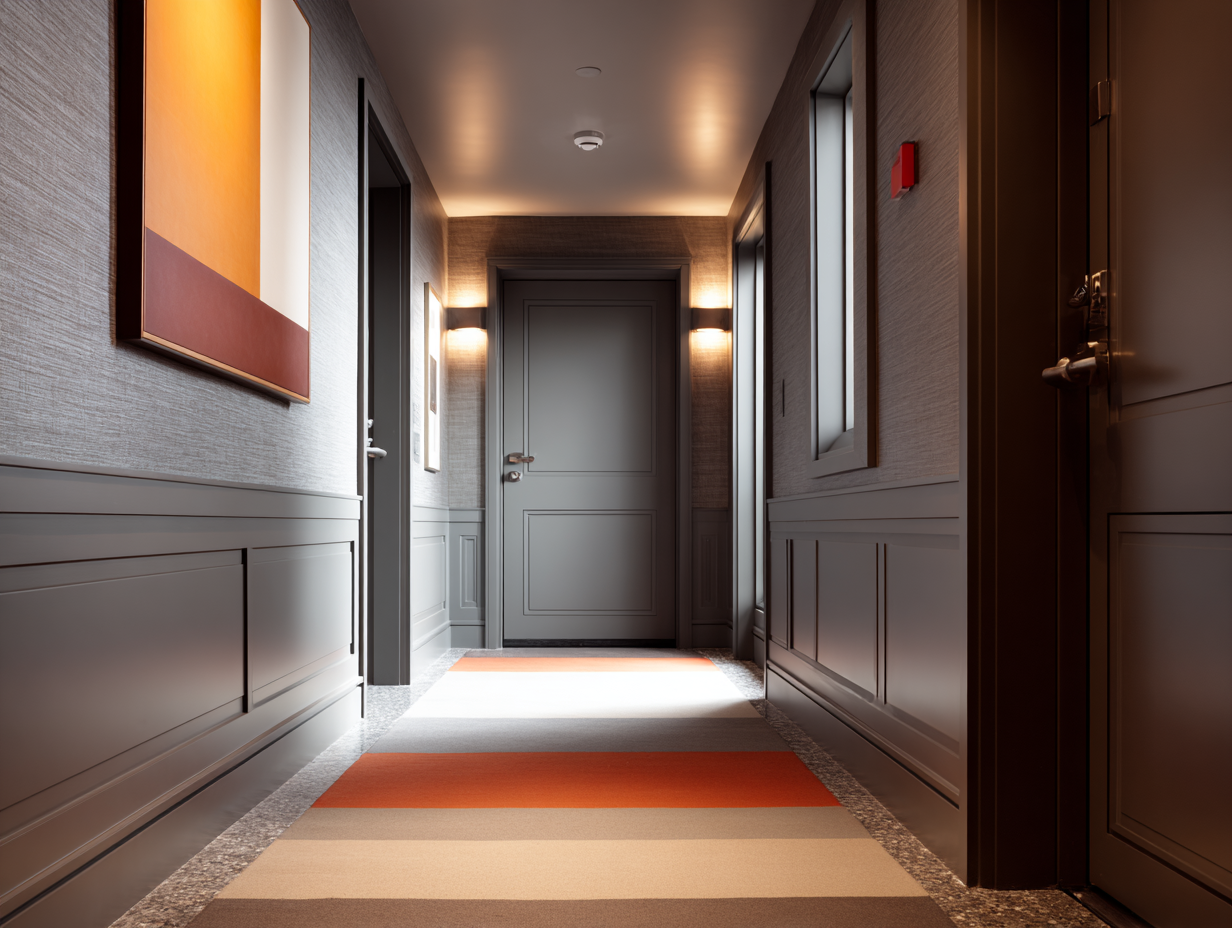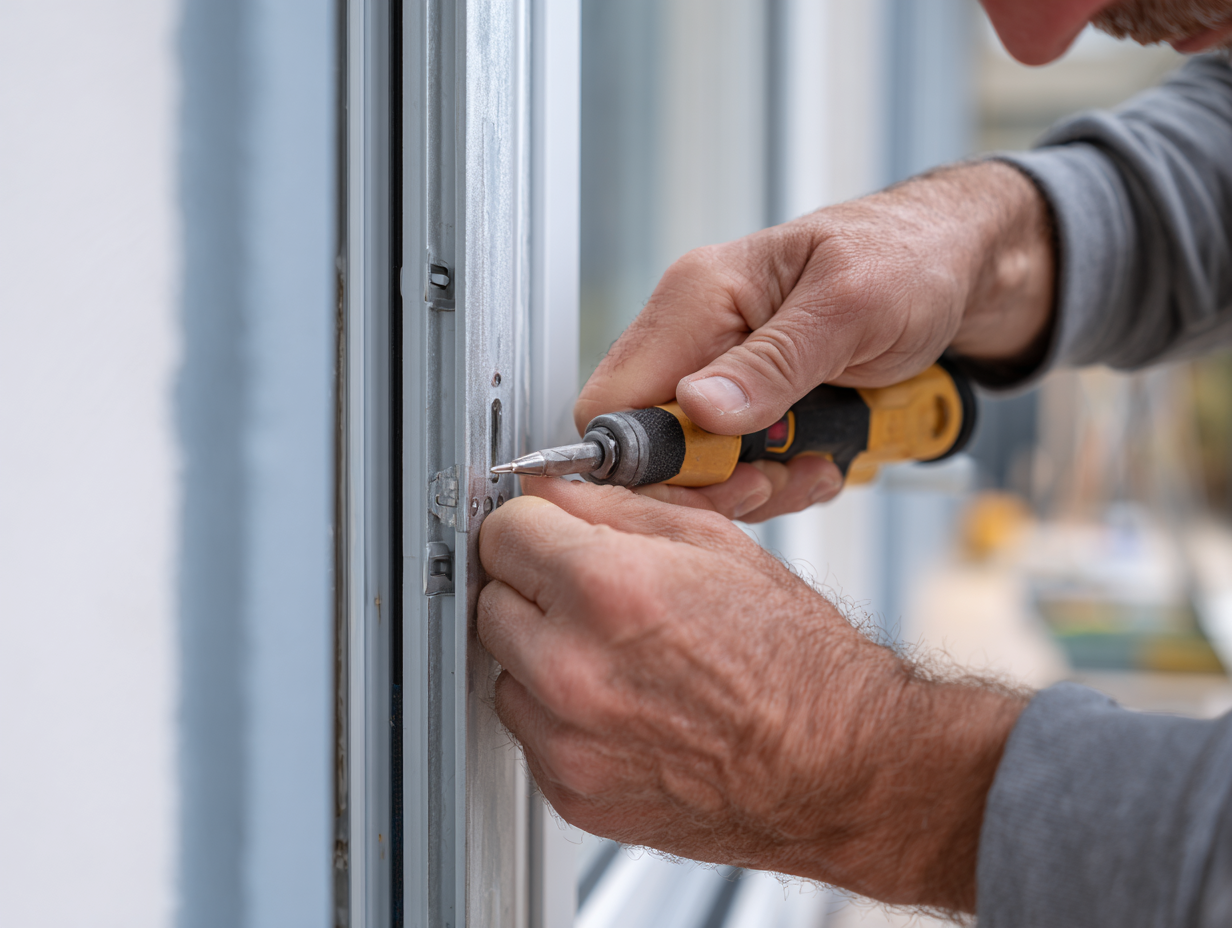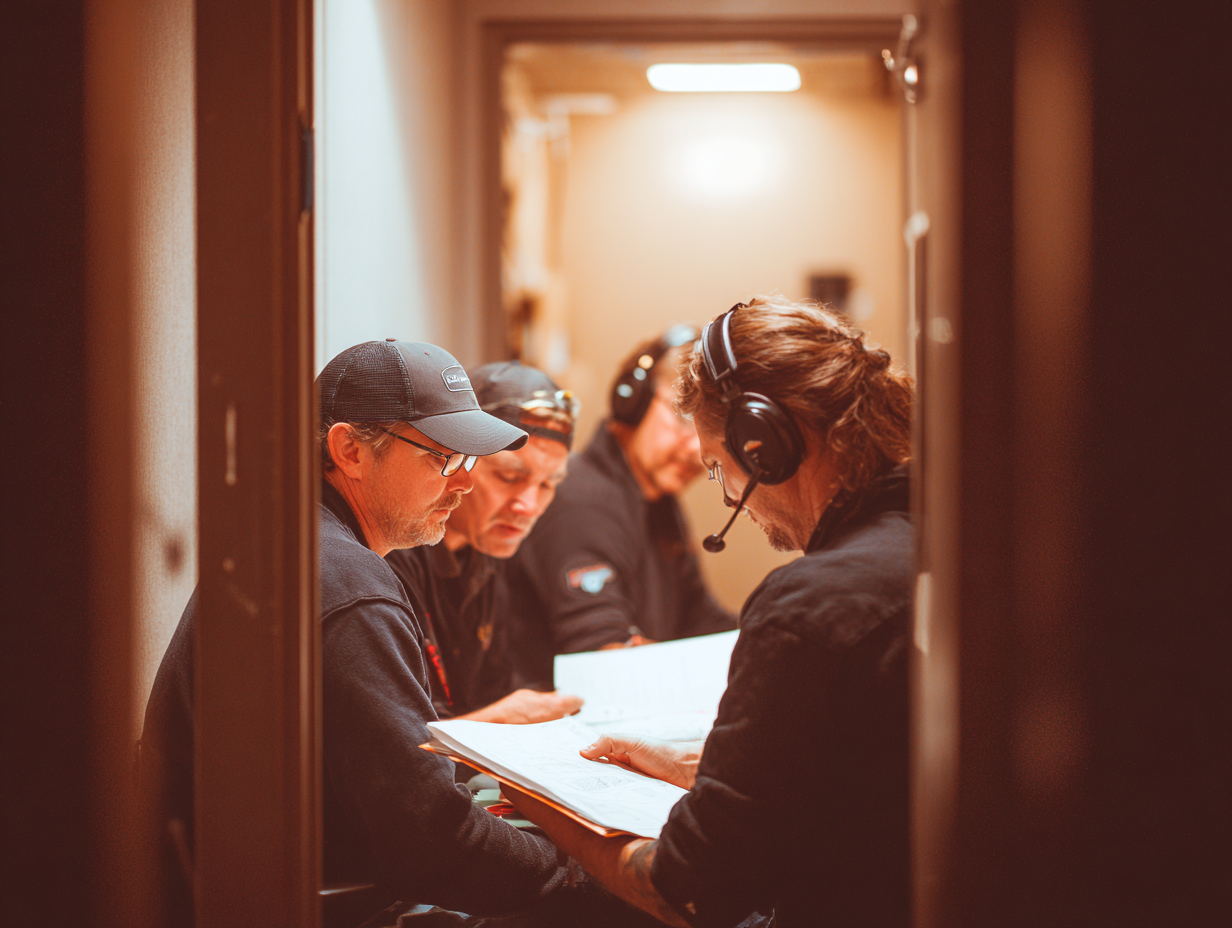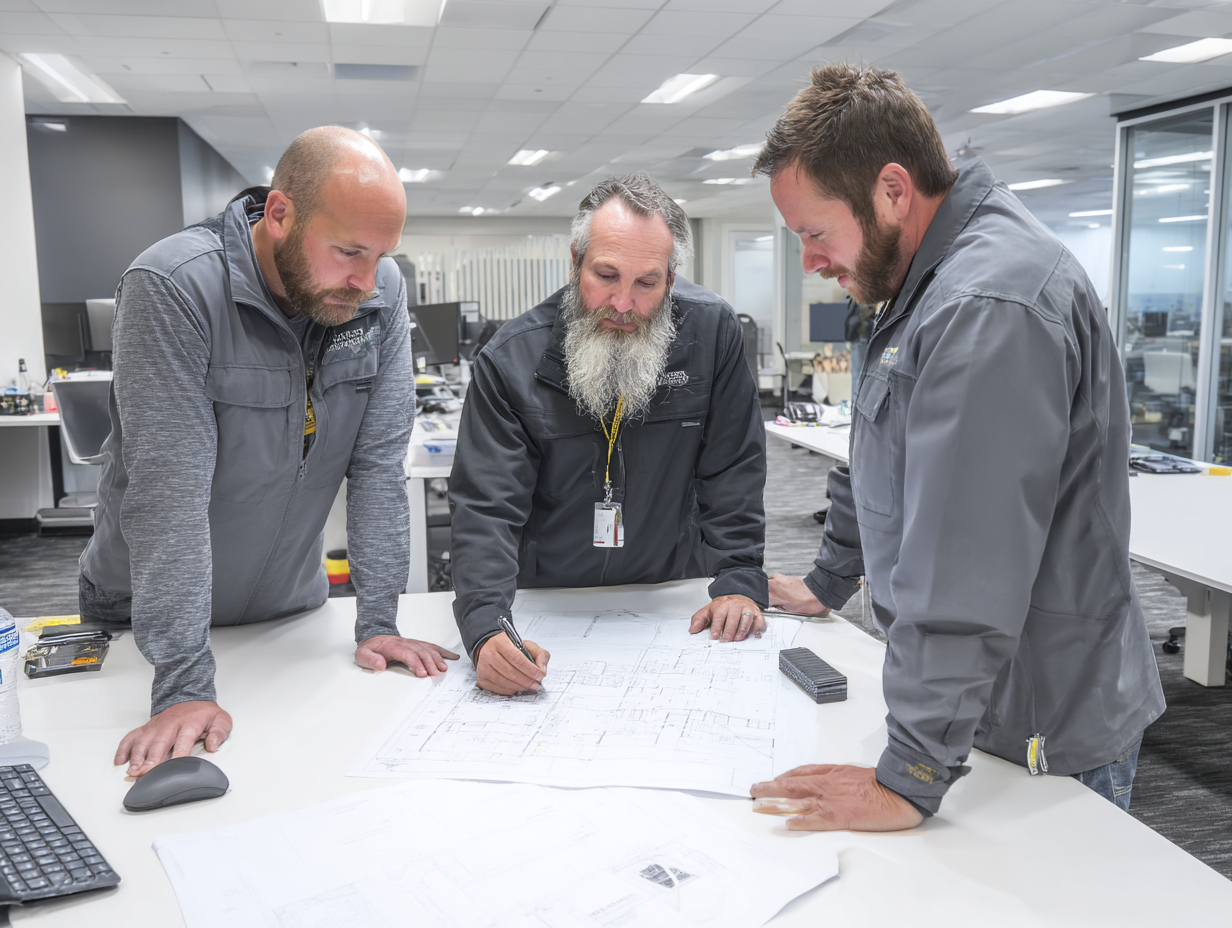Door Soundproofing in New York City
When you live or work in New York, silence is never guaranteed. Doors that look solid often hide the real reason noise keeps sneaking in — small gaps, thin cores, or weak seals. At New York Soundproofing, we know how frustrating it can be when unwanted sounds travel freely through your space. That’s why we focus on one goal: making your doors work as true sound barriers, not just entryways.

Stop Noise from Traveling Through Your Doors
Noise leaking through doors can ruin focus, privacy, or a good night’s sleep. In homes, it’s the constant hallway traffic. In offices, it’s the conversation from the next room. Studios and clinics face it too — sound bleeding between spaces where silence is crucial.
At New York Soundproofing, we specialize in solving exactly that. Our door soundproofing methods stop noise at its weakest point — right where it enters. By combining technical precision with a craftsman’s touch, we make your door both functional and acoustically effective.

Comprehensive Door Soundproofing Solutions in NYC
Every door, every building, and every sound problem is different. That’s why our approach is built on testing, customization, and experience. Before suggesting any treatment, our experts inspect how sound moves through your door and frame. We use both on-site and virtual consultations to assess the issue accurately.
Our soundproofing for doors includes everything from professional sealing to door core upgrades. Whether you’re dealing with echo in an office or noise from the street, our team creates solutions that actually match your environment — not generic kits. The result: better privacy, improved comfort, and lasting quiet.

Our Door Soundproofing Services
When it comes to stopping noise, every detail matters. Below are the core services we offer for door soundproofing projects across New York City.
Interior Door Soundproofing
For most buildings in NYC, interior doors are built for looks, not for silence. They’re light, hollow, and allow sound to pass easily from one room to another. Our interior door soundproofing service changes that completely.
We reinforce door structures, install acoustic cores, and add seals that block both airborne noise and vibration. This is ideal for home offices, apartments, medical spaces, and studios where privacy or focus is essential. Each project is customized to preserve your interior design — because great soundproofing shouldn’t ruin good aesthetics.
Door Seal and Weatherstripping Installation
A small air gap can leak a surprising amount of sound. That’s where our sealing and weatherstripping work comes in. We install soundproofing door seals, automatic bottoms, and door frame soundproofing elements that close every opening through which sound could slip.
These components create an airtight perimeter while allowing the door to open and close smoothly. The improvement is instant — better acoustic isolation, fewer distractions, and greater comfort. Plus, quality seals help with energy savings and thermal insulation, giving you an added layer of value beyond sound control.
Under Door Soundproofing
Even the smallest space beneath a door can undo all your soundproofing efforts. That gap is often the easiest path for sound to travel. Our under-door soundproofing systems use precision-fitted door soundproofing strips and automatic drop seals that activate when the door closes.
These solutions eliminate sound leakage without affecting movement or damaging flooring. Whether for residential or commercial spaces, under-door sealing remains one of the most effective upgrades you can make to improve your acoustic comfort.
Soundproofing Door Covers and Blankets
Not every soundproofing solution has to be permanent. Sometimes you need flexibility — a removable, effective way to block sound without replacing the door. That’s where soundproofing door covers and soundproofing blankets for doors come in.
At New York Soundproofing, we design and install both temporary and fixed acoustic panels that reduce sound transfer through doors while improving comfort inside the room. These covers work perfectly for studios, rental spaces, or offices where structural changes aren’t an option. Lightweight but powerful, they absorb mid and high-frequency noise and can be customized to match your interior. It’s the quickest way to turn a noisy space into a quiet one — without construction.

Why Choose New York Soundproofing for Your Door Project
Choosing a soundproofing partner means trusting someone with your peace of mind. Here’s what makes New York Soundproofing stand out from every other acoustic contractor in the city.
20+ Years of Combined Acoustical Expertise
Soundproofing isn’t guesswork — it’s science and craftsmanship combined. Our team has been in the industry since 2002, and New York Soundproofing was officially formed in 2014 to serve clients who demand measurable results. Over the years, we’ve worked with homes, offices, recording studios, restaurants, and even schools across the five boroughs.
That experience means we know what works in the dense, noisy environment of New York City — and what doesn’t. Every soundproofing door project benefits from that depth of knowledge.
Custom Solutions Manufactured Locally in NYC
We’re proud to produce and assemble many of our acoustic components right here in New York. That means faster turnaround times, consistent quality, and complete control over materials.
If you need door soundproofing strips, acoustic seals, or specialized panels, we can create them locally to match your exact needs. No generic kits or imported materials — just solutions engineered for New York spaces by people who live and work here too.
Comprehensive On-Site Consultation and Testing
Before we install anything, we listen — literally. Our process starts with a full acoustic evaluation, either on-site or virtually, where our specialists measure decibel levels and pinpoint where noise is entering or escaping.
This door soundproofing consultation helps us design a targeted plan rather than a rough estimate. You’ll know exactly what to expect in terms of results, cost, and installation time. It’s transparency backed by expertise.
Complete Project Support from Start to Finish
We handle everything — from design to delivery to final testing. That means no contractors to coordinate, no guesswork, no confusion. Our technicians install, test, and adjust every seal, cover, or door soundproofing strip until your space performs exactly as promised.
And once the project is done, we stay in touch. Many clients call us back when they move or expand — a sign of trust that we value deeply.

Our Door Soundproofing Process
Every project begins with a conversation. Here’s what you can expect when working with New York Soundproofing.
Step 1 - Acoustic Consultation and Noise Assessment
We start by understanding your environment. Our specialists visit your site (or connect virtually) to measure sound levels, identify weak points, and discuss your goals. Whether you need door soundproofing for privacy, comfort, or compliance, this first step sets the foundation for success.
Step 2 - Custom Solution Design
After the assessment, we develop a tailored plan using the right combination of seals, barriers, and acoustic materials. We balance effectiveness, cost, and aesthetics so that the result fits your space and your budget. Every element — from the door seal for soundproofing to frame isolation — is selected based on real data, not assumptions.
Step 3 - Professional Installation
Our experienced installers treat your property with care. They fit every soundproofing door seal, apply under-door soundproofing solutions, and ensure every connection is tight, clean, and functional. Installation is quick, discreet, and designed to minimize disruption to your routine.
Step 4 - Testing and Follow-Up
Once installation is complete, we test. We measure before-and-after decibel levels and confirm that your door performs as intended. If anything needs fine-tuning, we handle it immediately. The goal is simple — a quieter, more comfortable environment that lasts.

Get Your Free Door Soundproofing Consultation Today
Noise doesn’t fix itself. It takes knowledge, precision, and the right materials to make silence last. At New York Soundproofing, we’re ready to help you reclaim your quiet — whether it’s in your home, office, or studio.
Call now to schedule your free consultation or book an appointment online. Let’s turn your noisy doorway into a true sound barrier.
Schedule Your Free Consultation Today — and experience the quiet difference with New York Soundproofing.
FREQUENTLY ASKED QUESTIONS
Do you provide virtual consultations for door soundproofing?
Yes. We offer both on-site and virtual consultations throughout NYC. During a virtual consultation, we guide you through assessing your door, measuring gaps, and identifying noise sources. It's convenient and effective for planning your project before installation.
Can soundproofing help with echo and reverberation inside a room?
Yes. Soundproofing door covers and acoustic blankets don't just block noise from traveling through — they also absorb sound within the room, reducing echo. This is especially helpful in studios, conference rooms, or spaces with hard surfaces.
Do I need to soundproof the entire door frame too?
Often, yes. Sound travels through gaps between the door and frame, not just through the door itself. That's why our door frame soundproofing treatments seal the perimeter completely. A comprehensive approach — treating both the door and frame — delivers the best results.
Will soundproofing work on old doors in prewar buildings?
Yes. We regularly work with doors in older NYC buildings. Prewar apartments and commercial spaces often have unique door styles and frames, but our team knows how to adapt solutions to fit these structures without compromising their character or function.
Do you offer soundproofing for commercial doors?
Yes. We work with offices, studios, restaurants, medical facilities, and other commercial spaces throughout NYC. Our solutions maintain professional aesthetics while delivering real acoustic performance. We understand that commercial projects often have specific privacy and noise compliance requirements.
Can you soundproof interior doors between rooms?
Absolutely. Interior door soundproofing is one of our most common services. We reinforce door structures, add acoustic seals, and install soundproofing materials that block noise between rooms — perfect for home offices, bedrooms, or any space where privacy and quiet are essential.
How long does door soundproofing installation take?
Most door soundproofing projects are completed in a few hours to a single day, depending on the number of doors and complexity. Simple seal installation is quick, while comprehensive treatments with acoustic cores and multiple components may take longer. We work efficiently to minimize disruption.
Will door soundproofing also help with temperature control?
Yes. Quality door seals and weatherstripping not only block sound but also improve thermal insulation and energy efficiency. By eliminating air gaps, you reduce drafts and prevent heat loss or gain. It's an added benefit beyond acoustic comfort.
What's the difference between a soundproofing door cover and a blanket?
Both reduce sound transmission, but door covers are typically more permanent installations, while blankets offer flexibility. Soundproofing blankets for doors can be hung temporarily and removed when needed — perfect for rental spaces or studios. Covers are usually fixed panels designed to match your interior. We help you choose based on your needs.
Do soundproofing door seals affect how the door opens and closes?
No. Our door seals and weatherstripping are designed to create an airtight perimeter while allowing smooth operation. Automatic door bottoms engage only when the door closes, so there's no dragging or resistance when opening. Professional installation ensures everything functions perfectly.
How effective is under-door soundproofing?
Very effective. The gap under a door is often the biggest culprit for sound leakage. Installing door soundproofing strips or automatic drop seals can make an immediate, noticeable difference. It's one of the quickest and most affordable soundproofing upgrades you can make.
What causes noise to leak through doors?
Noise leaks through gaps around the door frame, under the door, and through the door itself if it's hollow or lightweight. Even small air gaps can let significant sound pass through. Our solutions target all these weak points — sealing gaps, reinforcing the door core, and adding acoustic barriers.
Can I soundproof a door without replacing it?
Yes. Most door soundproofing projects don't require replacement. We add seals, weatherstripping, automatic door bottoms, and soundproofing covers or blankets to your existing door. These upgrades dramatically reduce noise without the cost or disruption of installing new doors.
How much does door soundproofing cost in NYC?
The cost depends on the type of treatment needed and the number of doors. Simple weatherstripping and seals are more affordable, while complete door upgrades with acoustic cores cost more. During your free consultation, we assess your situation and provide a detailed estimate based on your specific needs and budget.
In this video New York Soundproofing demonstrates the dramatic difference before - and after - installing our acoustic panels. This acoustic treatment project was at the Galaxy Visuals video studio - a state-of-the-art video studio in Brooklyn, NY.
The video room was turned from acoustically unusable to sounding exceptional!
When our clients moved into the space, there was so much echo they couldn't do any video shoots with decent sound, or even understand each other speak.
New York Soundproofing to the rescue! We installed acoustic panels that matched the space and could fit in an area that is outside of the camera frame for a fantastic result. This is only one example of many where we transform an unusable space into a great-sounding room fit for recording, listening and more.
Contact us today to see how we can help transform your space! (Also see Galaxy's client testimonial video below).
